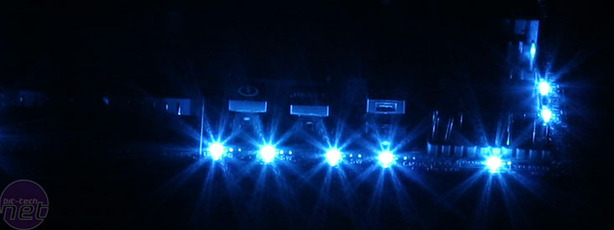Features:
If you've looked at the previous page, you’ll notice that the board has three PCI-Express x16 slots – the third slot is a new addition to NVIDIA’s nForce 600-series chipset and unlike the two ‘primary’ PCI-Express x16 slots, it only runs with an x8 electrical interface. NVIDIA expects enthusiasts to install a third video card for physics acceleration in the future, but it will also allow users to install another PCI-Express x16-compatible expansion card like a dedicated RAID controller.The SATA connectors are all rotated 90 degrees, just like we found on DFI’s LANParty NF590 SLI-M2R/G motherboard. We think these are great, but it does mean that you’re not going to be able to use the clip-lock SATA cables as they don’t fit properly. Instead you’ll have to use standard SATA cables that just lock in place without the metal clipping mechanism – it’s a shame, but we think the 90-degree rotation is a better solution as it gets the cables out of the way of the longer expansion cards.



There must have been a time where you’ve struggled to plug in the front panel wires or other fiddly things into your motherboard once it has been installed into the case. Fear not, however - Asus has solved the problem with a simple but clever innovation on the Striker Extreme (the feature is also present on the Crosshair, too - Ed.). When the board is plugged in but turned off, there are several bright blue LEDs around the edge of the board near to plugs or pin headers – this is to provide light when you are fiddling around trying to plug these things in once you’ve installed the board in your chassis.
It’s also possible to configure the blue LEDs from inside the Striker BIOS (which we’ll cover in more detail shortly) – it’s possible to turn them on all of the time, including when the board is powered on, or leave them at the default setting where they turn on only when the board is powered down. You would think that the only thing missing from this feature is the option to completely turn the LEDs off without completely powering the system down at the wall. Asus has covered this though, as there is a switch on the rear I/O panel that turns the blue LEDs off when the system is powered down.

MSI MPG Velox 100R Chassis Review
October 14 2021 | 15:04









Want to comment? Please log in.